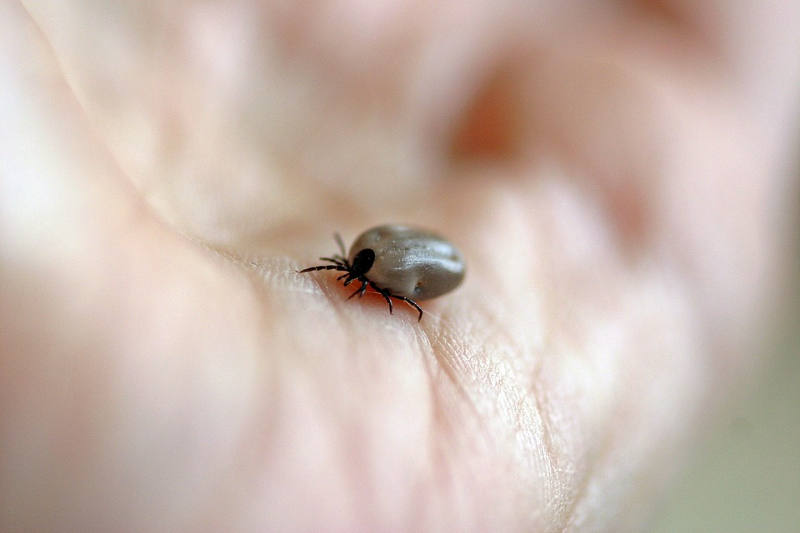With the highly anticipated arrival of spring, and the continued rise in temperatures in Grey Bruce, comes the return of arguably the largest outdoor threat to pet health and safety: ticks.
Due to changes in the global climate, less of the tick population dies off from the winter permafrost, leaving more ticks to repopulate each spring. This results in a greater risk of infection for pets and humans alike, especially along our beautiful hiking trails and wooded areas.
Tick prevention should be at the top of every pet owner’s health and safety checklist. In Canada, there are approximately 40 different species of tick; every single one of them has the potential to do harm.
Lyme disease is the most commonly known tick-borne disease, however ticks can transmit a whole range of harmful viruses, bacteria, and even parasites to animals and humans alike. The black-legged tick is especially dangerous in our area.
According to the Public Health Agency of Canada, from 2009 to 2017, Lyme disease cases in Canada have increased from 144 to 2,025; an increase of over 1,300%.
When a tick comes into contact with a host, they burrow part way into the skin and begin to draw blood. Ticks release a mild anaesthetic at the point of contact on the skin, so people and pets often don’t feel the tick is there as it continues to feed and grow for 72 hours or more, before falling off.
Learning how to prevent, check for, and remove ticks is essential for all pet owners. Follow these steps this season to stay protected:
Prevention is Key
Preventative tick medications are widely available through your veterinarian or local pet retailer. Most of these products come in the form of repellant shampoos or sprays, liquid spot-on drops, or oral tablets.
While not 100% reliable, tick medications are highly effective and will significantly reduce the risk of infection. One study published in Veterinary Parasitology found that topical solutions were up to 88.4% effective, and oral medications were a whopping 99.9% effective at preventing ticks.
Check Daily
Spring through fall is tick season. After being outdoors, especially in higher risk environments like forests and tall grassy areas, it is important to perform thorough tick checks on yourself and your pets.
Ticks can be extremely small – as small as a sesame seed – so be fastidious during your checks. Dog owners are wise to pay particular attention to folds of the skin, toes and paw pads, areas inside and around the ears, armpits, and areas with thick fur. Ticks are very shrewd, and love to hide in places where they have the best chances of not being discovered.
Avoid High Risk Areas
Heavily forested areas and areas with tall grasses, such as fields, are particularly attractive homes to ticks. Ticks spend a great deal of time sitting on branches and the ends of tall blades of grass, waiting for a potential host to walk by. When the right opportunity strikes, they hitch a ride on their unsuspecting host, and begin to go to work.
Areas such as marshes, off-trail hiking spots, and wooded camping spots often have high tick populations as well. Stay in well-maintained areas, such as maintained dog parks, mowed fields, or wide trails to best avoid ticks.
Following these steps are the fundamentals of tick prevention. However, if you happen to find one on your pet, it’s important to act quickly and decisively. Be very careful when removing a tick, as improper removal techniques can result in part of the tick remaining inside the skin, leading to painful infections.
To remove a tick, carefully grasp the tick as close to the skin as possible using a tick removing tool or a pair of fine point tweezers. Gently and slowly pull the tick upward in a twisting motion. Once the tick is removed, clean the area with rubbing alcohol. Be sure to wash your hands well and disinfect your tick removal tool.
You may wish to keep the tick alive in a small jar for testing. Contact your veterinarian to find out whether they want to test it. Otherwise, squish it in a paper towel and dispose of it in the garbage. Do not squish a tick with your bare hands. Always wash your hands immediately after removing a tick, as well.
As residents of this wonderful community, we are fortunate to live in one of the most pristine areas in the world. Ticks may be a significant risk to human and animal health, but that shouldn’t stop us from enjoying and exploring the great outdoors. By following these simple steps, you can ensure both you and your pets will continue to remain tick-free throughout the warmer months.
Happy Spring!
Brandon Forder, known as The Pet Expert, is vice-president of Canadian Pet Connection, an industry leader in healthy pet lifestyles. Brandon is certified in pet nutrition, and has more than twenty-five years’ experience specializing in pet health and behaviour. He has written hundreds of informative pet-related articles for newspapers, magazines, radio, and the popular Ask the Pet Expert Blog. Brandon is highly skilled in pet problem solving, and enjoys teaching others about smart and responsible pet ownership. To learn more, visit www.CanadianPetConnection.ca.












